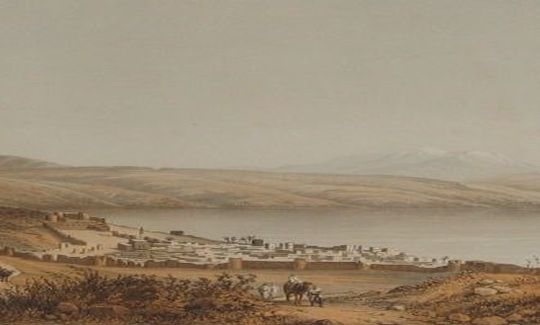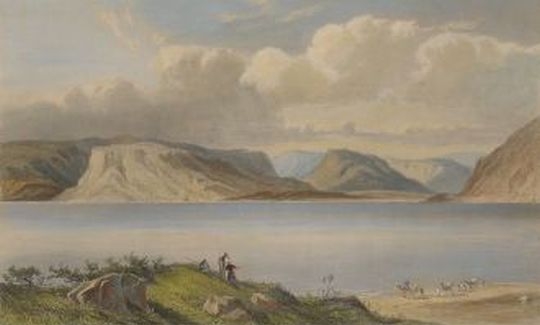Views of Tiberias and the Sea of Galilee in prints
17th -19th Centuries
Saturday, 10.05.14
:
Avshalom Zemer
More info:
04-6030800Tiberias on the Sea of Galilee was founded in the year 19 or 20 CE by Herod Antipas, and was named for the Roman Emperor Tiberius (14-37 CE). For Jews, Tiberias is one of the four sacred cities, the others being Jerusalem, Hebron and Safed, inhabited by the largest Jewish populations from the end of the Middle Ages until the 19th century. According to the New Testament, Jesus and his disciples were active in the area, and the city was a destination for pilgrims for hundreds of years.
Throughout its history Tiberias has undergone many changes. Until the Moslem conquest of the country in 638 CE, it was the centre of Jewish settlement in Eretz-Israel. During the Crusader era (1099-1187), the city expanded northwards into its current location, and was the capital of the Province of Galilee. After the battle of Hattin in 1187 and during the Mameluke period (1250-1516), it was deserted. In the 16th century, Don Josef, a prominent figure in the politics of the Ottoman Empire, and Donna Grazia, a Jewish businesswoman, made great efforts to revive the Jewish Quarter, but it lapsed again after their death. At the end of the 16th and the beginning of the 17th centuries most of the Jews of Tiberias who had endured robbery and violence at the hands of Arab fellahin had moved to Safed. In the 18th century, Daher al-Omar of the Beduin Zaidan family became governor. He filled Tiberias with Jews and Christians, his allies against the Pasha of Damascus, and built a walled Jewish Quarter. The Jewish community flourished. In 1742, Suleiman al-Atem, Pasha of Damascus, besieged Tiberias but failed to conquer it. Three years later Daher al-Omar moved to Acco and left his son, Tsheleby, in charge of the city. Daher al-Omar's other sons then rebelled against him, hoping to profit from his status as governor of Galilee. They fortified themselves in Tiberias, and in 1754 Daher al-Omar besieged the city for almost a month, until his sons surrendered. In 1759 there were two powerful earthquakes in the area, after which the city was partly restored by Tsheleby. After Daher al-Omar's death in 1775, the security of the Jewish Quarter was again under threat, and again the population declined. In 1837 another powerful earthquake destroyed Safed and severely damaged Tiberias. At that time, the Ottoman rulers encouraged new immigrants to settle in Tiberias, so that the Jewish population again increased, ultimately becoming the largest sector in the city. However, overcrowding, hunger and disease made their lives very difficult, and their main income derived from charity received from other Jewish communities. Their rigorous conservatism did not allow for developing an economy and also affected Jewish education, as did the missionary activities of Christian institutions. A slight improvement in the city's economy began only at the end of the 19th and the beginning of the 20th century, when the first Jewish villages were founded on the lands of the Palestine Jewish Colonization Association in the Jordan Valley and Lower Galilee. At that time Tiberias became the centre for agricultural settlements in the region. As the Jewish community expanded, so did the overcrowding in the Jewish Quarter, and buildings were constructed on and outside the remains of the old wall, initially to the south. These comprised the nucleus of the new Jewish neighborhood "Achva" (Brotherhood).
The exhibition presents prints from the Collection of the National Maritime Museum. These prints, many of them by renowned artists such as Delaborde, van de Velde, De Bruyn, David Roberts and Bartlett, depict the shores of the Sea of Galilee, the city, the hot springs, and the sites sacred to Christianity, including Capernaum and Magdala.


